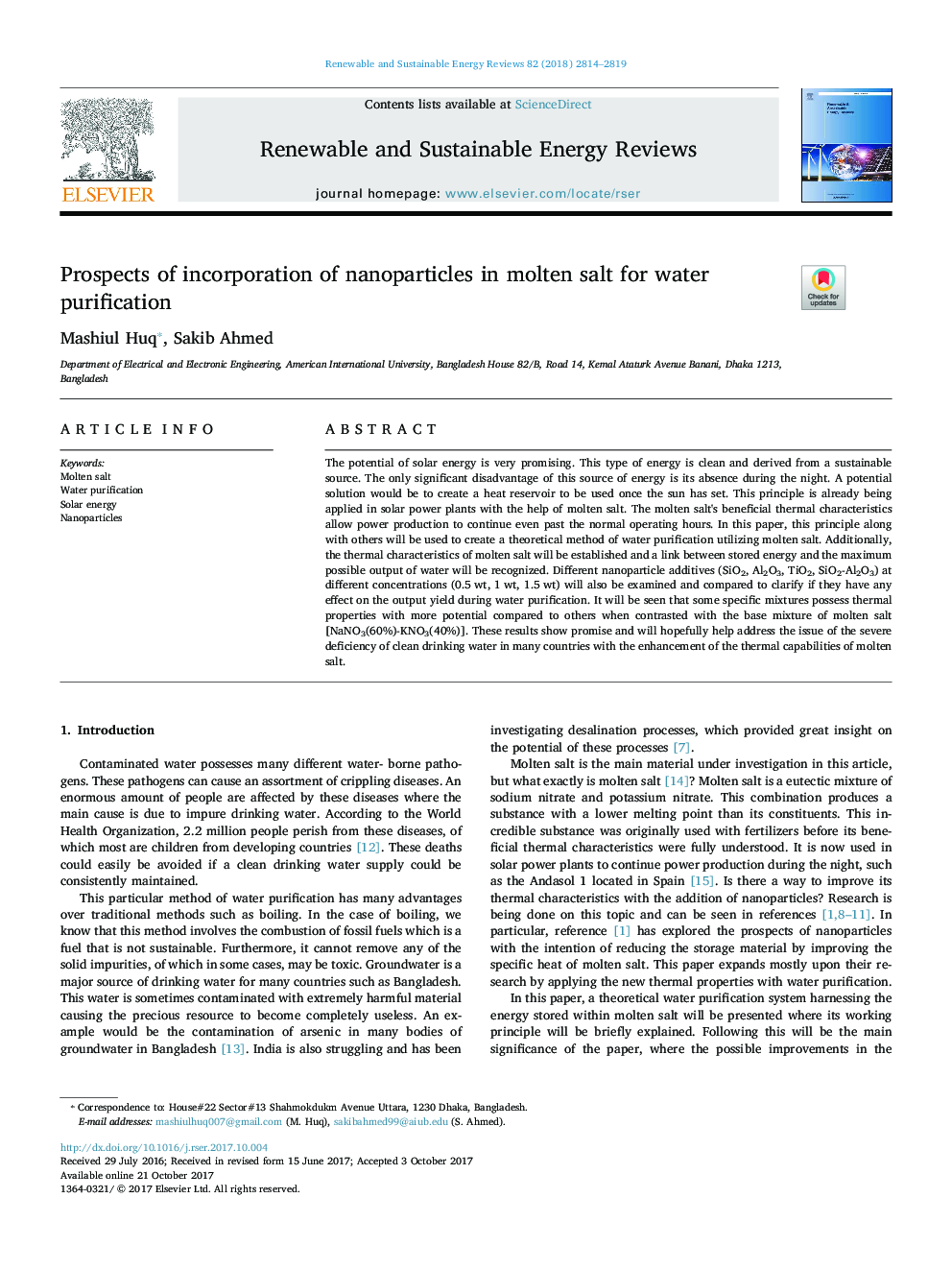| Article ID | Journal | Published Year | Pages | File Type |
|---|---|---|---|---|
| 8111946 | Renewable and Sustainable Energy Reviews | 2018 | 6 Pages |
Abstract
The potential of solar energy is very promising. This type of energy is clean and derived from a sustainable source. The only significant disadvantage of this source of energy is its absence during the night. A potential solution would be to create a heat reservoir to be used once the sun has set. This principle is already being applied in solar power plants with the help of molten salt. The molten salt's beneficial thermal characteristics allow power production to continue even past the normal operating hours. In this paper, this principle along with others will be used to create a theoretical method of water purification utilizing molten salt. Additionally, the thermal characteristics of molten salt will be established and a link between stored energy and the maximum possible output of water will be recognized. Different nanoparticle additives (SiO2, Al2O3, TiO2, SiO2-Al2O3) at different concentrations (0.5Â wt, 1Â wt, 1.5Â wt) will also be examined and compared to clarify if they have any effect on the output yield during water purification. It will be seen that some specific mixtures possess thermal properties with more potential compared to others when contrasted with the base mixture of molten salt [NaNO3(60%)-KNO3(40%)]. These results show promise and will hopefully help address the issue of the severe deficiency of clean drinking water in many countries with the enhancement of the thermal capabilities of molten salt.
Related Topics
Physical Sciences and Engineering
Energy
Renewable Energy, Sustainability and the Environment
Authors
Mashiul Huq, Sakib Ahmed,
